Chamonix-Mont-Blanc ski resort is famous for its ideal location at the foot of Europe’s highest peak. What was a small mountain village until the end of the 19th century has become a cosmopolitan centre in the French Alps of Haute-Savoie. The resort is an excellent base for exploring three iconic sites: the Aiguille du Midi, the Mer de Glace, and the Brévent mountain.
🎥 Watch our short video on Chamonix to discover the fantastic alpine resort ⤵
Chamonix-Mont-Blanc: a bit of history
Before the 18th century, Chamonix (or Chamouni as it was then known) was situated in a remote position at the foot of Mont-Blanc, “the doomed mountain”.
In 1760, Swiss geologist Horace Bénédict de Saussure (1740-1799) offered a reward to the first man to reach the summit of Mont Blanc. Two Chamonix men, Michel Paccard and Jacques Balmat, made it to the top in 1786 for the first time in recorded history.
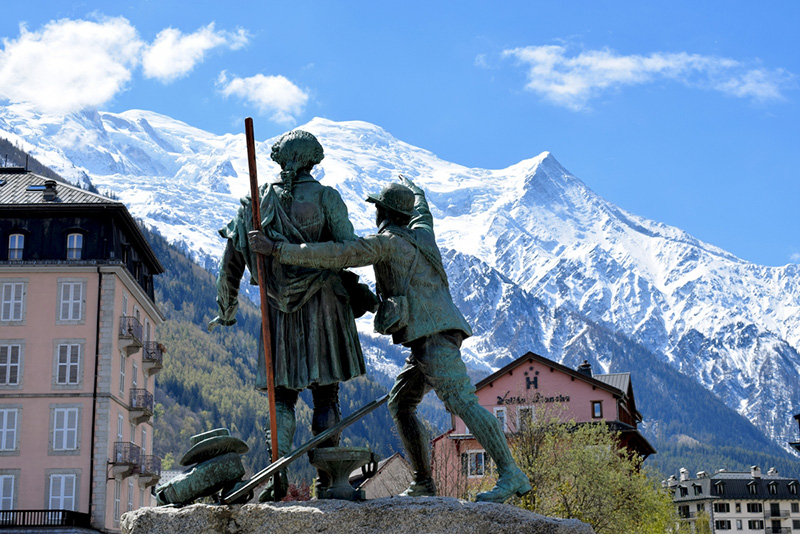
Since then, and for over two centuries, Chamonix has welcomed travellers from all over the world. Wealthy visitors were drawn to the resort by its reputation for outdoor pursuits: mountaineering, hiking, climbing, mountain biking, paragliding, skiing and snowboarding.

Originally located on the Duke of Savoy‘s lands, the Chamonix commune became French on 4 April 1860. It took the name Chamonix-Mont-Blanc on the 21st of November, 1921.
An imperial visit!
On 2 September 1860 (a couple of months after Chamonix became French), Emperor Napoleon III and Empress Eugénie arrived at Chamonix for a 2-day state visit. The following morning, the imperial couple got up early to climb the Montenvers summit. From there, they admired the Mer de Glace. The imperial visit contributed to the fame of the village.

But Chamonix owes its fantastic development as a skiing resort to the first Winter Olympic Games held in 1924.

Chamonix-Mont-Blanc: a dynamic resort!

The population of Chamonix-Mont-Blanc accounts for approximately 9,000.
However, it faces crucial demographic variations depending on the tourist seasons:
- 60,000 visitors enter the Valley of Chamonix in Winter and
- more than 100,000 in Summer.
Apart from admiring the former palaces that once hosted famous visitors, there is little interest in the town.
Check out the delicate balcony railings here and there, Art Nouveau architecture reminiscent of the Belle Epoque era.



Honestly, the magnificent surroundings make Chamonix so much worth a visit.
Since 1965, Chamonix has been linked to Courmayeur in the Aosta Valley by the 11.6 km long Mont Blanc Tunnel.
It runs beneath the mountain just under the Aiguille du Midi. Alongside the St Gotthard and the Fréjus tunnels, it ranks as one of the significant trans-Alpine transport routes.
Day Trip from Geneva
Embark on a scenic journey through the picturesque Arve Valley from Geneva to the charming resort of Chamonix, nestled at the foot of Mont-Blanc, Europe’s highest peak.
Prepare to be awe-struck by the breathtaking panoramas as you traverse dramatic mountain landscapes by train and cable car.
The day’s highlights include:
- Marvelling at the mesmerizing beauty of the Arve Valley during a delightful drive to Chamonix,
- Witnessing awe-inspiring vistas of Mont-Blanc from the summit of Aiguille du Midi and
- Experiencing an unforgettable ride on the world-famous cable car.
Get ready for a day of unforgettable natural wonders and exhilarating adventures in the heart of the Alps.
Explore the Mer de Glace with the Montenvers Railway
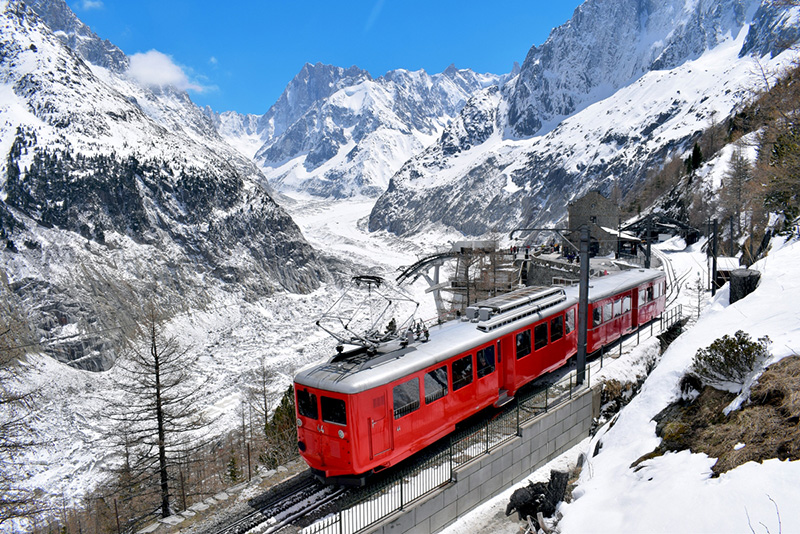
The Montenvers mountain railway (Chemin de fer du Montenvers) is a train service that departs from Chamonix and goes up to the Montenvers Hotel (1.913 m). The line is 5.1 km long, and trains take 20 minutes, running at 14 to 20 kph.
Onboard, you can admire the beautiful mountain landscape dominating Chamonix’s valley.





The inauguration of the first section of the line took place in 1909. Visitors embarked on trains pulled by steam locomotives. Until the railway line was electrified in 1953.

A breathtaking panorama!
On arrival at the Montenvers upper station, visitors can opt for a 20-minute walk or a short gondola ride down into an ice cave carved out of the Mer de Glace (in summer only).


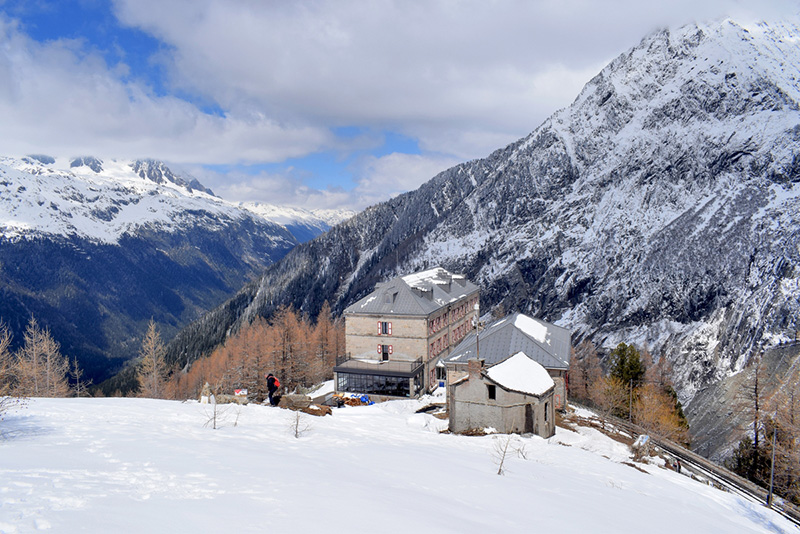
The panorama at Montenvers is exceptional, with the Mer de Glace and the impressive “needle” of the Drus.
The Mer de Glace (literally Sea of Ice) is a 7 km long and 200 metres deep glacier. It is the longest glacier in France.

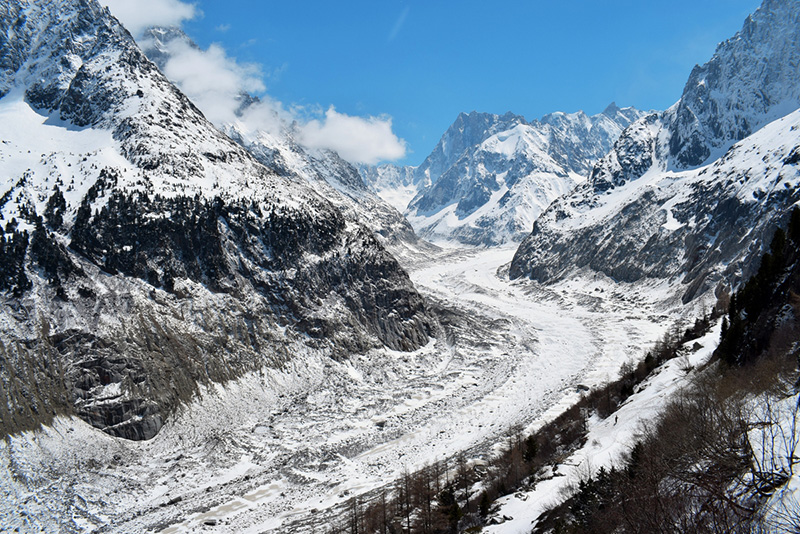

Until the 19th century, the glacier, visible from Chamonix, was even longer, reaching the hamlet of Les Bois. It attracted painters and later photographers like William Turner with the 1816 painting “Source of the Arveron in the Valley of Chamouni Savoy”.
Today, the glacier is steadily retreating: at Montenvers station, it has thinned by 190 metres since 1820.

► Read more about my visit to the Mer de Glace on board the Montenvers train on my French blog!
► Learn more about the Montenvers Train (tickets, passes and timetable).
An unforgettable journey to Aiguille du Midi

The journey to Aiguille du Midi is arguably one of the Alps’ most exciting cable car rides.
It is a two-stage journey, lasting only 20 minutes with an ascent of 2,800 m. The cable car first leaves the centre of Chamonix to Plan de l’Aiguille (2,308 m), suspended half the time 500 m above ground.
From there, some visitors prefer to go on a great day excursion to the Montenvers train station and take the train back down to Chamonix.

From Plan de l’Aiguille, a second cable car rises without any support pillar, to Aiguille du Midi with fantastic views of the jagged Aiguilles de Chamonix and the upper parts of the Mont-Blanc massif.
Aiguille du Midi: a breathtaking view
The Aiguille du Midi culminates at an altitude of 3,842 metres. From there, the mountain view is breathtaking. It embraces the Swiss, Italian and French Alps as far as the Matterhorn and Monta Rosa.




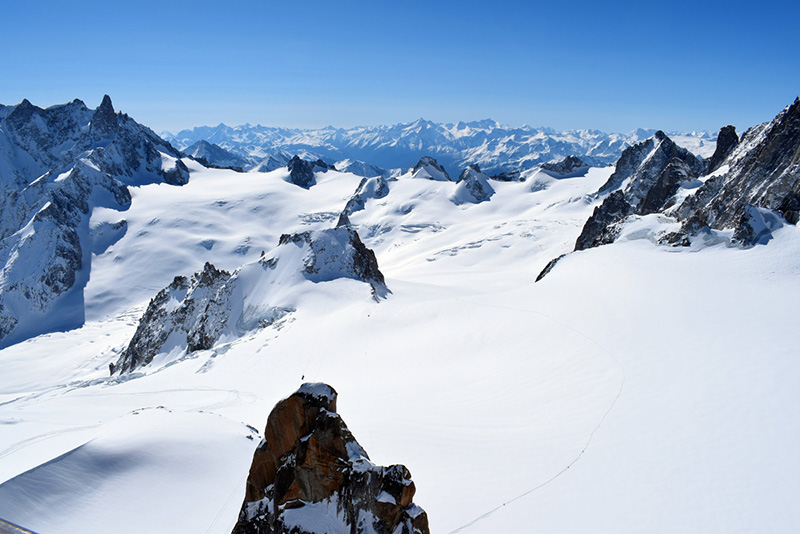

The Aiguille du Midi (literally Needle of the South) is said to have been called so by the local population as its position indicated the South.
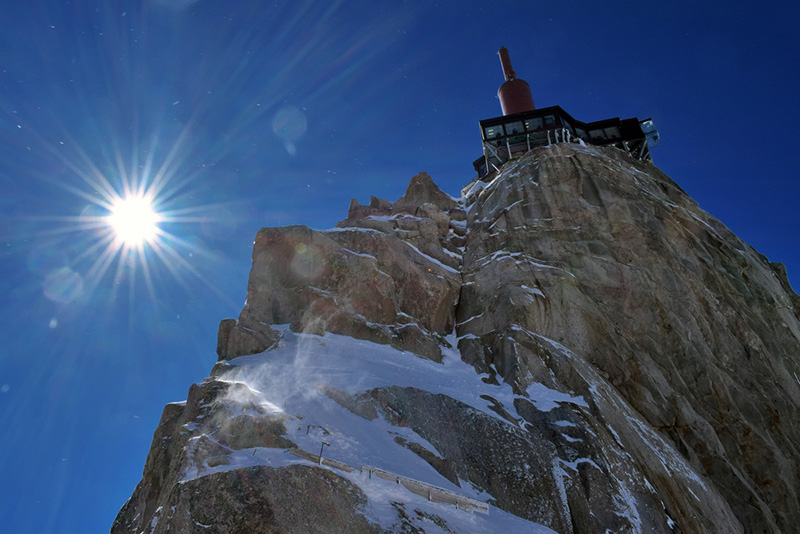
The highest tourist attraction in Europe!
The Aiguille du Midi station has two panoramic viewing platforms, a café, and a gift shop. The Gourmet restaurant named “3842” is one of the highest restaurants in the world.
The cable car station is situated at an altitude of 3,777 m. A footbridge connects it to the central pillar of the needle.

You can walk around the central pillar thanks to galleries, stairs, lifts and outdoor terraces. One of the latest additions is Le Tube (the Pipe). The 32 m-long steel gallery allowed visitors to circuit around the central pillar of the Aiguille du Midi without backtracking.




The ice tunnel!
One of my favourite attractions was this ice tunnel:

Inside the rocky needle is a lift that brings visitors on a final 42 m ascent to the top terrace at 3,842 m.
This is where you’ll find the daring Step into the Void attraction. It consists of a 2.50 m glass room suspended over a 1000 m precipice.

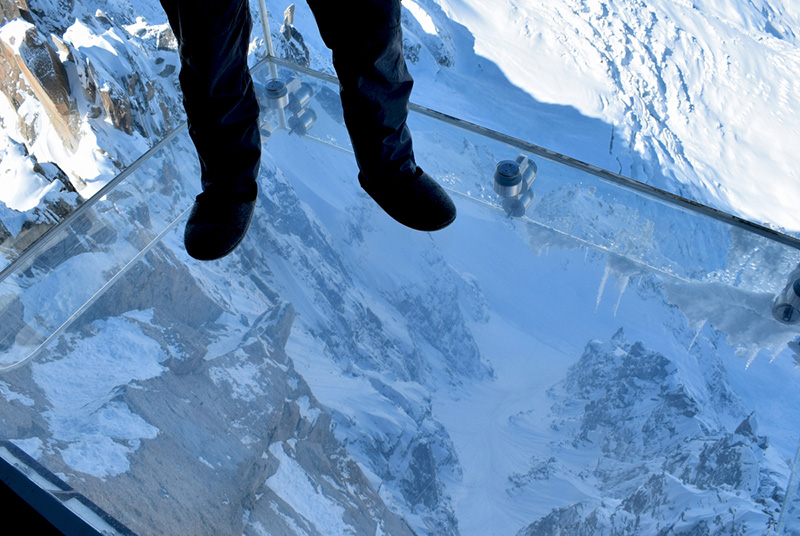

The Aiguille du Midi is the closest visitor that can get to Mont Blanc without climbing!


Above the Vallée Blanche
From Aiguille du Midi, another cable car (summer only) continues the challenging journey for 5 km and 30 minutes towards the Pointe Helbronner (3,462 m) above the Vallée Blanche and Glacier du Géant.
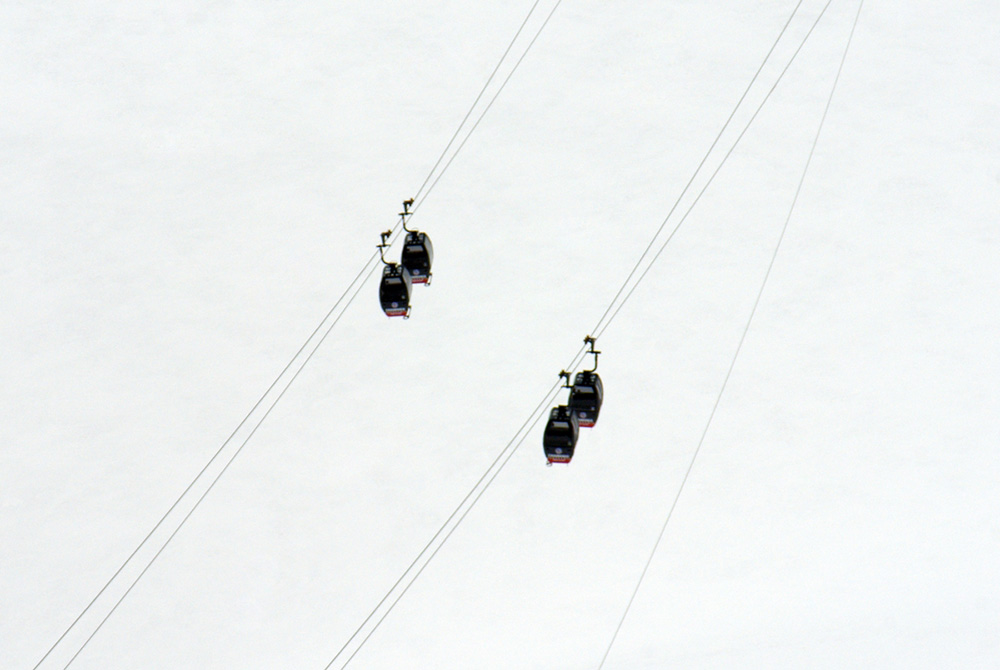
The Pointe Helbronner, marking the border between France and Italy, is served by another cable car descending to La Palud, a village near Courmayeur in the Aosta Valley, Italy.
► Read more about my visit to the Aiguille du Midi on my French blog!
► Learn more about the Chamonix-Aiguille du Midi cable car (tickets, passes and timetable).
The majestic view of Mont-Blanc from Le Brévent
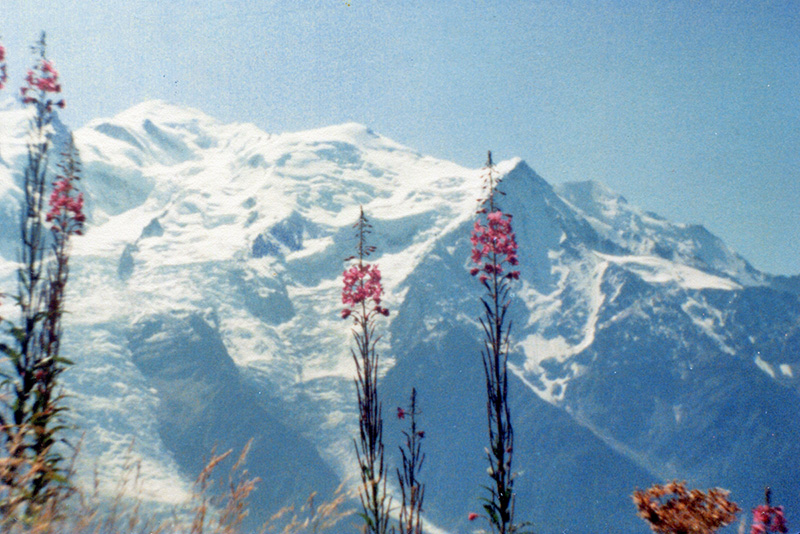
One of the best views of the Mont Blanc massif is at Le Brévent. This mountain rising on the other side of the valley is accessible by gondola from the centre of Chamonix-Mont-Blanc.
It takes only 20 minutes to reach the relay station of Planpraz at an altitude of 2,062m. The site offers beautiful views over the Chamonix Valley and Mont-Blanc. Planpraz is an ideal start for great classical hikes leading to magnificent mountain lakes or down to Chamonix.
The second stage of the journey, also by gondola, transports visitors to the summit of Le Brévent at an altitude of 2,526m within 20 minutes. From here, the view reaches over to the French side of Mont Blanc.
An adult ticket from Chamonix to Le Brévent (as of January 2024) is a €38.50 return.
► Learn more about the Chamonix-Brévent cable car (tickets, passes and timetable).
Four Seasons in Chamonix: What to See and Do All Year Round
In the heart of the French Alps, Chamonix-Mont-Blanc offers distinct experiences each season, making it a year-round alpine paradise.
Winter in Chamonix

Winter in Chamonix is a wonderland for snow sports enthusiasts, renowned for its world-class skiing and snowboarding. This season is perfect for those seeking thrilling downhill adventures or serene snowshoe treks. Apres-ski culture is a highlight, with cosy chalets and vibrant bars. Dress warmly (well, this is winter, after all!), and book accommodations and ski passes in advance due to the high demand.
Spring in Chamonix

As the snow recedes, Spring reveals Chamonix’s quieter side, ideal for those seeking tranquillity and the beauty of alpine blossoms. It’s a time for leisurely walks and enjoying nature’s rebirth. Spring skiing can also be enjoyed on higher slopes. This is a great time for deals on accommodation and a more relaxed pace of travel.
Summer in Chamonix

Summer transforms the valley into a lush, green playground, perfect for hikers, climbers, and outdoor enthusiasts. The Mont Blanc Massif beckons adventurers, and the valley’s cultural vibrancy peaks. This season suits those looking for active exploration or family-friendly activities in nature. Plan hikes early in the morning to avoid afternoon thunderstorms and book popular activities like paragliding in advance.
Autumn in Chamonix

Autumn in Chamonix is a hidden gem, with fewer crowds and a stunning display of fall colours. This season is perfect for photographers and those looking to enjoy the natural beauty at a relaxed pace. Autumn also brings local harvest festivals, adding a culinary dimension to your visit. Layered clothing is vital as temperatures vary, and check the schedule for local festivals to enhance your experience.
Visiting Chamonix in each season offers a unique perspective of the Alps, from the exhilarating snow-covered winters to the tranquil, colourful autumns. Tailoring your visit to what each season provides ensures a memorable experience in this stunning alpine destination.
Tandem Paragliding Flight in Chamonix!
Experience the thrill of tandem paragliding and take in spectacular alpine views as you fly over Le Brévent, Chamonix, and perhaps even a glacier.
Your adventure begins in Chamonix, where you’ll meet your pilot at the designated meeting point, typically at the cable car’s base. The pilot will then ensure that all the equipment is prepared correctly and provide you with a helmet and harness for a comfortable and secure flight experience. Before take-off, you’ll receive a briefing on what to expect during the flight and your role during the take-off process.
Once fully equipped, the staff will guide you to the cable car, where you and your pilot will continue your ascent to the take-off site. From there, all that’s left for you to do is enjoy the exhilarating flight. Marvel at the bird’s-eye views of the magnificent Mont Blanc range and the breathtaking alpine landscapes as you soar through the skies.
Highlights of this incredible experience include:
- Flying over Le Brevent, Chamonix, and potentially catching glimpses of a glacier,
- Enjoy the stunning panoramas of the Mont Blanc range throughout your flight and the unique opportunity to embark on tandem paragliding with a skilled and professional pilot.
- Brace yourself for an unforgettable adventure that combines adrenaline and breathtaking beauty in the heart of the French Alps.
Where to Stay in Chamonix: A Guide to Mountain Accommodations
Finding the perfect place to stay is critical to planning your trip to Chamonix-Mont-Blanc. The region offers various accommodations for every taste and budget, from luxurious chalets and upscale hotels to cosy guesthouses and budget-friendly hostels.

Luxury Chalets and Hotels
For those seeking a lavish retreat, Chamonix boasts several high-end chalets and hotels that offer exquisite amenities, including spa services, gourmet dining, and breathtaking mountain views. These accommodations are perfect for a romantic getaway or a pampered ski holiday.
Mid-Range Hotels and Guesthouses
There is an abundance of mid-range options that balance comfort with affordability. Many hotels and guesthouses offer charming, rustic rooms with easy access to the town centre and ski lifts.
Budget Accommodations and Hostels
Budget travellers and backpackers will find hostels and affordable lodgings in Chamonix. These accommodations are great for meeting fellow travellers and often provide communal kitchens and lounges.

Advice for booking your accommodation in Chamonix
- Book Early: Chamonix is a popular destination year-round. To secure your preferred accommodation, especially during peak seasons (winter and summer), it’s advisable to book well in advance.
- Location Matters: Consider the location of your accommodation and the activities you plan to do. Staying near the town centre can be convenient for dining and shopping, while accommodations near the ski lifts are ideal for winter sports enthusiasts.
- Consider Your Needs: Consider what you need from your accommodation – such as ski storage, free Wi-Fi, or family-friendly facilities – and check these are available before booking.
- Read Reviews: Before finalizing your booking, read reviews from previous guests. This can give you a better idea of what to expect and help you choose the best place for your stay.
- Look for Packages: Some accommodations offer packages that include ski passes, meals, or spa services, which can be cost-effective and convenient.
Considering these points and exploring the diverse range of accommodations in Chamonix, you can find the perfect place to stay that enhances your experience in this magnificent alpine destination.
Check out here to choose from a great selection of accommodations in Chamonix, or browse the map below:
How to get to Chamonix-Mont-Blanc

BY CAR. Chamonix-Mont-Blanc is easily accessible by car.
- From Paris, take the A6 to Mâcon and the A40 to Chamonix (this motorway is also called “Autoroute Blanche” – the white motorway!)
- From Marseille and Provence, take the A7 to Valence before connecting to the A49 to Grenoble and then the A41 through Chambéry and Annecy till it reaches the A40 motorway.
BY TRAIN. Chamonix is also easily accessible by train, with regular TGV service from Paris Gare de Lyon to Geneva or Annecy. Take a TER (regional express train) to Saint-Gervais-les-Bains before connecting to Chamonix with the Mont-Blanc express service. Some TGVs can also lead you directly to Saint-Gervais-les-Bains, located 20 km from Chamonix.

BY AIR. If you travel from Australia or America (or any other part of the world!), take a flight to the Swiss airport of Geneva Cointrin (88 km) or Lyon Saint-Exupéry (220 km) and rent a car from there. Geneva, Switzerland, is the closest airport to the Savoie region.
More info about Chamonix-Mont-Blanc
Here are a few links to other pages and sites about the resort of Chamonix-Mont-Blanc:
- My article on Mont Blanc, Europe’s highest peak
- Discover the historic province of Savoie
- My visit to the Aiguille du Midi on my French blog
- My visit to the Mer de Glace on board the Montenvers train on my French blog
- The Official Website of the Tourist Board of Chamonix
- For info about the ski lifts open all year round, visit the website of Mont Blanc Natural Resort
Pin it for later
Like what you read? Please share it on Facebook and Twitter or pin it on Pinterest.

I want to thank the Compagnie du Mont-Blanc for making this discovery of Chamonix, Aiguille du Midi and Mer de Glace such a unique and unforgettable moment!




